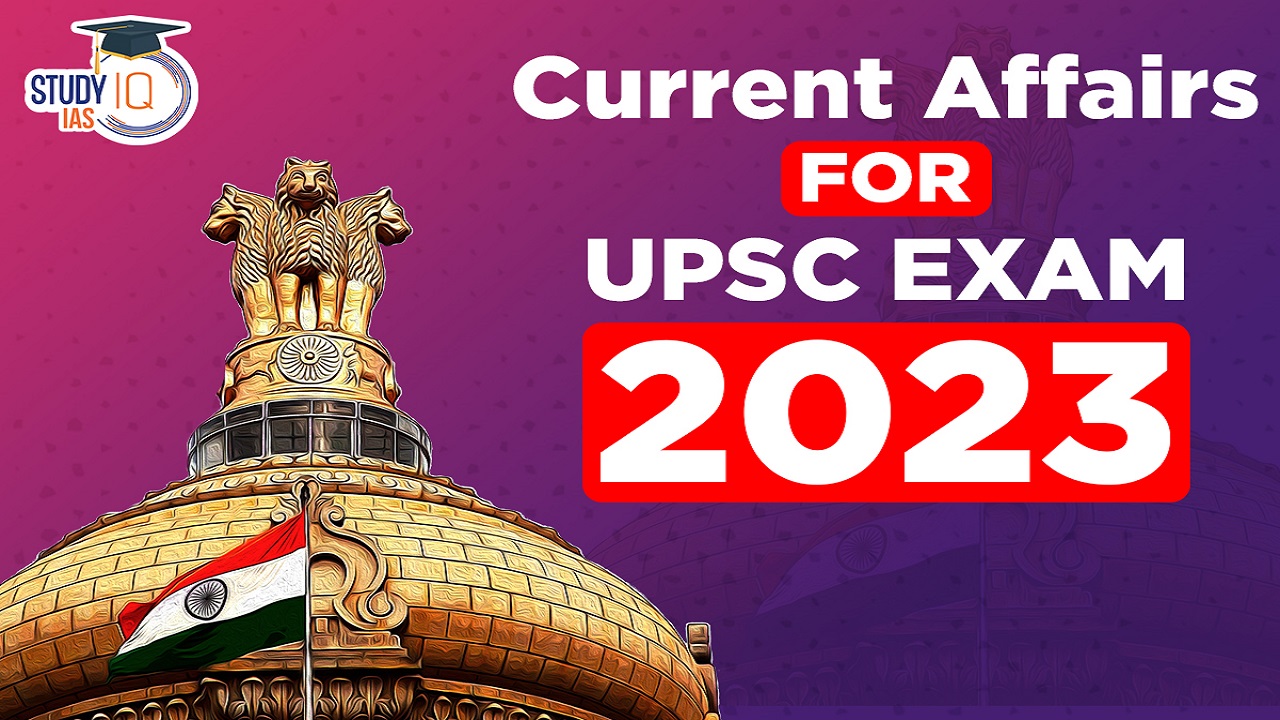Current Affairs 11th July 2023 for UPSC Prelims Exam
Scheduled Castes and Scheduled Tribes (Prevention of Atrocities) Act
Context: The Supreme Court stayed the arrest of a editor and publisher of a YouTube channel in a case registered under the Scheduled Castes and Scheduled Tribes (Prevention of Atrocities) Act.
About Scheduled Castes and Scheduled Tribes (Prevention of Atrocities) Act (SC/ST Act)
- SC/ST Act 1989: The Scheduled Castes and Tribes (Prevention of Atrocities) Act is popularly known as POA Act was enacted on September 9, 1989.
- Aim: This Act protects the marginalized communities against discrimination and atrocities.
- Provisions: The SC/ST Act lists 22 offences relating to various patterns or behaviours inflicting criminal offences and breaking the self-respect and esteem of the scheduled castes and tribes community. This includes denial of economic, democratic and social rights, discrimination, exploitation and abuse of the legal process.
- According to the SC/ST Act, the protection is provided from social disabilities such as denial of access to certain places and to use customary passage, personal atrocities like forceful drinking or eating of inedible food sexual exploitation, injury etc, atrocities affecting properties, malicious prosecution, political disabilities and economic exploitation.
- Under Section 18 of the Act, provision for anticipatory bail is not available to the offenders.
- Any public servant, who deliberately neglects his duties under this act, is liable to punishment with imprisonment for up to 6 months.
- SC/ST Prevention of Atrocities (Amendment) Act, 2015: It was introduced to make the act more stringent with the following provisions:
- Addition of certain IPC offences like hurt, grievous hurt, intimidation, kidnapping etc., attracting less than ten years of imprisonment, committed against members of Scheduled Caste/Scheduled Tribe, as offences punishable under the PoA Act.
- Establishment of Exclusive Special Courts to exclusively try the offences under the PoA Act to enable speedy and expeditious disposal of cases.
- Clearly defining the term ‘wilful negligence’ of public servants at all levels, starting from the registration of complaint, and covering aspects of dereliction of duty under this Act.
- If the accused was acquainted with the victim or his family, the court will presume that the accused was aware of the caste or tribal identity of the victim unless proved otherwise.
- 2018 Supreme Court Judgement: The SC in Subhash Kashinath Mahajan vs The State of Maharashtra case introduced the following safeguards to the accused under SC/ST Act:
- The bar on anticipatory bail under the Act need not prevent courts from granting advance bail if there is no merit in a complaint.
- “Preliminary enquiry” to be conducted in all cases before registration of FIRs.
- The person can be arrested by an investigating officer, only if the “appointing authority” (in the case of a public servant) or the SP (in the case of others) approves such arrest.
- 2018 Amendment in SC/ST Act: Parliament had, by an amendment to the SC/ST Act, introduced section 18A in 2018. The government had resorted to this step to undo the March 2018 judgment of the Supreme Court. Key provisions were:
- Preliminary enquiry shall not be required for registration of a First Information Report against any person; or
- The investigating officer shall not require approval for arrest, if necessary, of any person, against whom an accusation of having committed an offence under the PoA Act has been made.
- It rules out any provision (Section 438 of the CrPC that deals with anticipatory bail) for anticipatory bail for the accused.
Current Affairs 10th July 2023 for UPSC Prelims Exam
Western Disturbance
Context: The weather department has attributed the heavy rainfall over Chandigarh and its adjoining areas to a Western Disturbance (WD), which has hit the northern parts of India.
About Western Disturbances
- Definition: A Western Disturbance (WD) is an extra-tropical storm which originates in the Mediterranean region.
- In the term “extra-tropical storm”, storm refers to low pressure.
- “Extra-tropical” means outside the tropics. As the WD originates outside the tropical region, the word “extra-tropical” has been associated with them.
- The disturbance travels from the “western” to the eastern direction.
- Disturbance means an area of “disturbed” or reduced air pressure. Equilibrium exists in nature due to which the air in a region tries to normalize its pressure.
- Western Disturbances are frequent, and their spells can be long or short.

- Difference between Western Disturbances and Monsoon: The monsoon is well-defined.
- In India, it is confirmed that the monsoon arrives in July and lasts till September.
- However, WDs have no fixed time of arrival.
- Also, while the monsoon period is around three months, WDs can last for very short spells.
- Impact on India: A WD is associated with rainfall, snowfall and fog in northern India during winters.
- Upon its arrival in Pakistan and northern India, clouds along with rain also arrive.
- It is very useful for wheat and other Rabi crops.
- Forecast of Western Disturbance: According to the India Meteorological Department, the prediction of an upcoming Western Disturbance can only be made around six days before its arrival.
- To keep tabs on it, the weather departments concerned monitor the activities over the Mediterranean region every half an hour.
National Commission for Scheduled Tribes (NCST)
Context: The National Commission for Scheduled Tribes (NCST) has issued notices to the Odisha Government in a case where a Scheduled Tribe migrant worker from Kandhamal district was assaulted at a railway station in Mumbai.
About National Commission for Scheduled Tribes (NCST)
- Definition: The National Commission for Scheduled Tribes (NCST) was established by amending Article 338 and inserting a new Article 338A in the Constitution through the Constitution (89th Amendment) Act, 2003.
- By this amendment, the erstwhile National Commission for Scheduled Castes and Scheduled Tribes was replaced by two separate Commissions namely:
- The National Commission for Scheduled Castes (NCSC), and
- The National Commission for Scheduled Tribes (NCST).
- By this amendment, the erstwhile National Commission for Scheduled Castes and Scheduled Tribes was replaced by two separate Commissions namely:
- Composition: The Commission comprises a Chairperson, a Vice-Chairperson and three full time (including one lady) Members appointed by the President by warrant under his hand and seal.
- The term of office of Chairperson, Vice-Chairperson and each member is three years from the date of assumption of charge.
- The Chairperson has been given the rank of Union Cabinet Minister, and the Vice-Chairperson that of a Minister of State and other Members have the ranks of a Secretary to the Government of India.
- The Chairperson, the Vice-Chairperson and other Members shall not be eligible for appointment for more than two terms.
- Functions:
- To investigate and monitor all matters relating to the safeguards provided for the STs under the Constitution or under any other law for the time being in force or under any order of the Government.
- To inquire into specific complaints with respect to the deprivation of rights and safeguards of the STs.
- To participate and advise in the planning process of socio-economic development of the STs and to evaluate the progress of their development.
- To present to the President, annually and at such other times as the Commission may deem fit, reports upon the working of those safeguards.
- To make in such reports, recommendations as to the measures that should be taken by the Union or any State for effective implementation of those safeguards and other measures for the protection, welfare and socio-economic development of the Scheduled Tribes.
- To discharge such other functions in relation to the protection, welfare and development and advancement of the Scheduled Tribes as the President may subject to the provisions of any law made by Parliament by rule specify.
- Powers: For Investigation and Inquiry of matters under Clause (5) of Art. 338A, the Commission is vested with powers of a civil court having authority to:
- Summon and enforce attendance of any person and examine on oath.
- Discovery & production of any documents.
- Receive evidence on affidavits.
- Requisition any public record or copy thereof from any court or office.
- Issue Commissions for examination of witnesses and documents; and
- Any matter which President, by rule, may determine.
Majorana Zero Modes And Topological Quantum Computing
Context: In a paper published recently, researchers at Microsoft announced that they had figured out a way to create an elusive kind of particle that could potentially revolutionise quantum computing.
More on News
- The claim of researchers pertains to particles called Majorana zero modes, whose unique properties could help build quantum computers that are much less fragile than they are today, making them computationally superior.
What is a Majorana Zero Mode?
- Definition: The particles, also known as Majorana fermions, were first proposed by Italian physicist Ettore Majorana in 1937.
- They possess special properties that make them their own antiparticles, which is advantageous for building quantum computers.
- Example: The first big challenge today is to create Majorana zero modes in a system.
- A popular example of a system that could give rise to them is a structure called a topological superconductor.
- It consists of a semiconductor in the shape of a nanowire, with a superconducting sheath wrapped around it.
- The sheath covers a part of the nanowire. At one end, the nanowire is connected to a small junction through which electrons are fed into it. A magnetic field is applied over the materials to complete the setup.
- Here, Majorana zero modes are expected to exist at the ends of the nanowire, as a result of the interactions between the materials’ electronic structures.
How can Majorana Zero Modes help in Computing?
- Majorana zero modes can be used to realize the more powerful topological quantum-computing.
- A quantum computer today can use individual electrons as qubits – its fundamental units of information.
- Information can be encoded in some property of each electron, like its spin. Then, the computer manipulates that information by having the electrons interact with each other according to the rules of quantum mechanics.
- These rules make quantum computers better than classical computers: they allow the computers to access computational techniques and pathways not available to systems that are limited to the possibilities of classical physics.
- For example, a qubit can have the values 0 and 1 at the same time due to to a property called quantum superposition. But a semiconductor in a classical computer can have only one value at a time, 0 or 1.
- On the flip side, quantum computers have a big problem: they’re very fragile. Just a tap with fingers on a table on which there’s a computer and it could lose its quantummy abilities. That is, it could decohere.
- According to physicists, the Majorana zero mode is composed of two entities (electron and hole). In this configuration, physicists have found that even if one of the entities is disturbed, the overall qubit doesn’t decohere, and continues to protect the encoded information.
What is Quantum Computing?
- Definition: It is an area of computer science that uses the principles of quantum theory.
- Quantum theory explains the behaviour of energy and material on the atomic and subatomic levels.
- Use: Quantum computers have the capability to sift through huge numbers of possibilities and extract potential solutions to complex problems and challenges.
- Working: Where classical computers store information as bits with either 0s or 1s, quantum computers use qubits.
- While classical bits always represent either one or zero, a qubit can be in a superposition of one and zero simultaneously until its state is measured.
- In addition, the states of multiple qubits can be entangled, meaning that they are linked quantum mechanically to each other.
- Qubits can be made by manipulating atoms, electrically charged atoms called ions, or electrons, or by nanoengineering so-called artificial atoms, such as circuits of superconducting qubits, using a printing method called lithography.
- Topological Quantum Computing: Topological quantum computation is precisely such a new and different approach. It employs many-body physical systems with the unique property of encoding and processing quantum information in a naturally fault-tolerant way.
- The information is protected due to topological degeneracy.
- Degeneracy in quantum mechanics means that the system has multiple states at the same energy.
- In topological systems, the system has multiple states at the lowest or ground state energy, i.e., the quantum system can exist in two (or more) possible states at its lowest energy. This is usually not possible: in its ground state – i.e., when the system has the least amount of energy – the system will have a particular configuration and will exist in a particular state.
- If a system can exist in two possible states, or configurations, at its ground state, then the information encoded in that energy level can be recovered from one state or the other.
- Topological degeneracy’ refers to a special case. Topology is the study of those properties of matter that don’t change when it undergoes continuous deformation – i.e., when it’s stretched, folded, twisted, etc., but not ruptured or glued to itself.


 Phone-tapping in India, Legal Framework ...
Phone-tapping in India, Legal Framework ...
 Jharkhand High Court Assistants Admit Ca...
Jharkhand High Court Assistants Admit Ca...





















